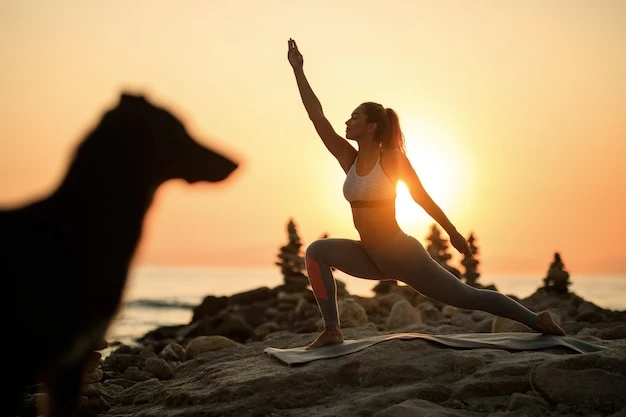Become USA Yoga Alliance Registered Yoga Teacher (RYT 200) through Vinyasa Yoga Ashram’s 200 Hour Yoga Teacher Training in Rishikesh, India and start your career in Yoga. Our comprehensive and professional program is designed for all levels of practitioners which includes several aspects of yoga, i.e. from Asanas to Kriyas and prepares you to become an independent yoga teacher.
Be a part of this life-changing experience at "Vinyasa Yoga Ashram" and begin your pleasant journey to lighten up your true self through yoga. This Intensive 200 Hour Yoga Teacher Training Course will provide you the deepest possible knowledge of yoga both in the form of theory as well as practical.
05:00 Am Morning Bell
06:30 - 07:30 Am Shatkarma & Pranayama
07:30 - 09:00 Am Vinyasa flow Yoga
09:00 - 10:00 Am Breakfast
10:00 - 10:45 Am Yoga Anatomy
11:00 - 11:45 Am Yoga Alignment
11:45 - 12:15 Pm Fruit Break
12:15 - 01:00 PmYoga Philosophy
01:00 - 02:00 Pm Lunch
04:00 - 5:30 Pm Ashtanga Yoga
06:00 - 7:00 Pm Meditation & Mantra chanting
07:10 - 08:00 pm Dinner
10:00 pm Lights off
Course Syllabus - 200 Hour Yoga Teacher Training
ASHTANGA YOGA
In 200 Hour Intensive Yoga Teacher Training in Rishikesh, India. We teach our students basics of Ashtanga yoga and we systematically guide them through the complete Ashtanga yoga primary series sequence created by K. Pattabhi Jois in a traditional way which includes-
Week 1 - Introduction to Ashtanga yoga (Primary series) followed by Sun salutation A & B.
Week 2 - Standing sequence postures & use of yoga props.
Week 3 - Seated sequence postures & Finishing sequence postures.
Week 4 - Mysore style & Teaching practice.
After practicing for the first 3 weeks based on the teacher’s guidance, the students will be tested in the 4th week in their Mysore style practice which is without guidance. Students will also be asked to guide some of the postures in the last week as a teaching practice.
VINYASA FLOW
Introduction and benefits Vinyasa Flow
How to design a Vinyasa Flow sequence
Vinyasa flow for peak postures
Importance of breathing in Vinyasa flow
How to cue/instruct the Vinyasa flow for different levels of practitioners
In the last week of the course, students will be asked to prepare their own flow and guide the entire class
YOGA PHILOSOPHY
Introduction to Yoga Philosophy (Yog Darshan) and its evolution
Introduction to Patanjali Yoga Sutras
Nadis (Ida, Pingala & Sushumna)
Introduction to Chakras
Explanation of Hatha Yoga Pradapika
Eight limbs of Ashtanga Yoga
Pancha – Vayus, Panchakoshas
Sattva, Rajas & Tamas (Trigunas)
Four Padas of Yoga Sutras
Life stories of yogis (Inspiring stories)
Introduction to Vedas
ANATOMY & PHYSIOLOGY
Body Movement & Planes
Importance of joints and how to Protect them in Asanas
Anatomy and Physiology of Muscles, Ankle, Knee, Hip, Spine, Neck and Shoulder
Breathing mechanism in Yoga and short introduction to Bandhas
Workshop on different Asanas
Food & Digestive System
Introduction to Respiratory System
Introduction to Nervous System
PRANAYAMA AND BREATHING EXERCISE
Introduction and benefits of Pranayama
Introduction of meditative poses and mudras
Introduction of bandhas (locks) and Kumbakhas (breath retention)
Knowledge sharing and regular practice of below mentioned breathing exercises:
Clavicular, Thoracic and Diaphragmatic Breathing
Yogic Breathing
Ujjayi, Bhastrika, Kapalbhati, Surya – Bhedi
Nadi – Sodhana, Bhramari, Chandra – Bhedi, Sheetali, Sheetkari
SHATKARMA (YOGIC CLEANSING PRACTICES)
Jalaneti
Rubber-neti
Eye-cleansing
Kapalbhati- cleansing the lungs
Kunjal - stomach cleansing
TEACHING METHODOLOGY
How to sequence a class
How to work with breathing and posture to create an appropriate sequence
How to cue/instruct and adjust different levels of practitioners
Building Positive & conscious communication, friendship and trust
Time management for a vinyasa flow
Qualities of a teacher
Principles of demonstration and observation to correct the postures of students
Mental & emotional preparation for teaching
Class preparation
Step by step class structure planning.
ASANA ALIGNMENT AND ADJUSTMENT
Fundamentals and need for Body alignment in Yoga Asanas
Alignment of different postures like standing, seated, backward extension, forward extension, twisting, inverted postures
Alignment explanation covers
How to perform the posture
Correct Alignment
Common mistakes and Precautions
Contraindication
Benefits
Modifications
Verbal adjustments
Hands on adjustments
MEDITATION
Introduction and importance of Meditation
Tips to improve concentration in order to avoid distractions during Meditation.
Different types of meditation techniques like:
Om / Mantra Meditation
Trataka
Osho Dynamic meditation
Silent Meditation Practice Japa Meditation
Ajapa japa
Antar mouna
Nada Brahma Meditation
EVALUATION
Students will be tested based on
Written Test
Asana Practical Test
Vinyasa Flow teaching to the class
Attendance, Performance & behaviour
ADDITIONAL LEARNINGS
Sound healing
Keertan meditation
Beach yoga
Acro yoga
Yin yoga
Partner yoga
Iyenger class
Note:- all these additional classes are not part of the course but are included additionally
Sattvic Diet- A sattvic diet served by our yoga school leads to the clarity of the mind, thoughts, and physical health of the body. This diet is eco-friendly, alkaline, and very light. Fresh fruits, nuts, vegetables, grains, etc are the part of Sattvic diet. We believe that a yogi must follow only the Sattvic diet plan.
Plant-based Diet- Heat destroys the enzymes, fiber, and nutrients contents of the food to an extent. As per our belief, raw food provides minerals and vitamins in the most virgin form. The enzymes play a crucial role in fighting from disease and making our digestive system strong. Herbs like coriander, turmeric, cardamom, ginger, and pepper are detoxifying, anti-microbial, and anti-inflammatory in nature which helps in lowering down of stress and stimulate the functions of thyroids.




